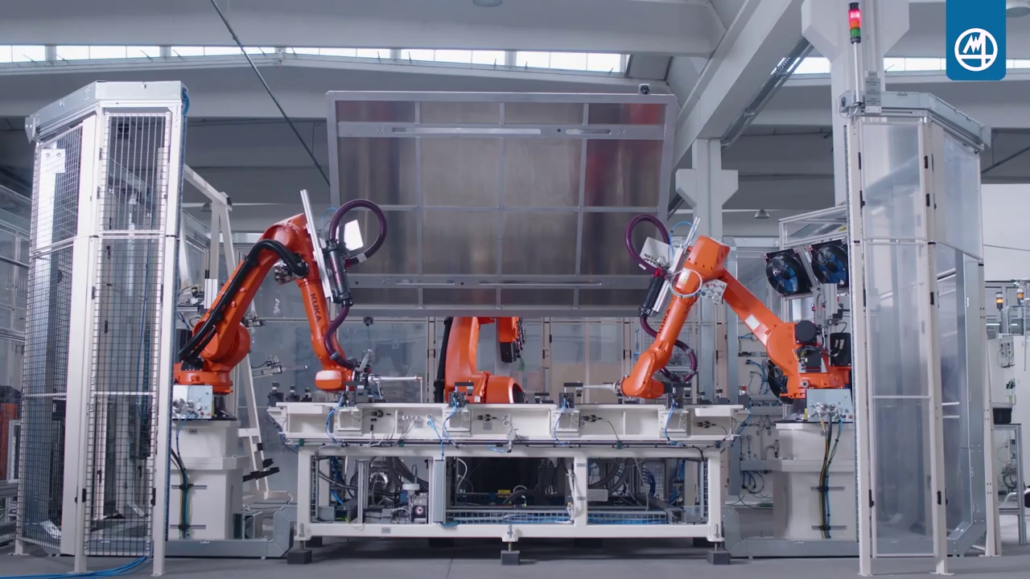Not quite airtight? That would be a serious problem for the battery industry on several product levels. In an exclusive interview with Battery-News, Bodo Herkle, Product Manager for Leak Testing and Assembly Systems at MARPOSS GmbH, explains which testing methods make battery manufacturers stay on the safe side.
Battery-News: MARPOSS supports numerous different industries with system solutions. How important is the battery industry in this context?
Bodo Herkle: Quite a significant one, as we are working intensively on challenges arising from the electric vehicle sector. For us, key topics lie in accompanying solutions for battery production – for example, in the form of leak testing or electrical testing on battery cells, modules, and packs.
Battery-News: What makes leak testing so important for the battery industry?
Herkle: We need to differentiate here, because there are different battery components that need to be tested for leaks using different quality criteria. In battery cells, cell chemistry and the cell interior must be isolated from the environment. The cell interior, for example, must be protected from humidity – as the environment must also be shielded from escaping electrolyte vapors that are hazardous to health. MARPOSS offers its customers different methods depending on the battery cells’ manufacturing stage. Battery cell cups, cell lids, or the assembled cell are usually subjected to integral helium tests before the electrolyte is filled. After the electrolyte has been filled and the cells are sealed, spectral gas analysis is used to detect any electrolyte components that may be leaking.
“Leak tightness requirements for battery packs are generally lower than those for battery cells.”
Battery-News: What about battery housings and packs?
Herkle: In the automotive sector, they essentially form the vehicle’s underbody and must protect the interior from moisture penetration, such as splash water. The energy from the individual cells is bundled in the battery pack, which means that all energy-carrying cables must be protected against short circuits or voltage flashovers. The leak tightness requirements for battery packs are generally lower than those for battery cells. Air mass flow, helium accumulation, and helium sniffing have established themselves as test methods for end-of-line testing or inspections of the battery tray, battery lid, or battery management system.
Battery-News: Another crucial component is the cooling circuit…
Herkle: That’s right! It keeps the batteries within an optimal temperature range, depending on the respective load case. So, the goal here is to regulate the temperature of the cells accordingly. Water-carrying heat conduction structures between the cells are directed through the battery pack. These cooling circuits must be leak-tested to prevent coolant from escaping. Depending on the design and volume of the cooling circuit, different measurement methods are used – for example, pressure drop testing and mass flow testing. To locate leaks, the helium sniffing method is also common.

Battery-News: How can you best support battery manufacturers in such testing procedures?
Herkle: Product development cycles are becoming shorter. That’s why it is often helpful to advise our customers at the earliest possible stage – as part of simultaneous engineering. In addition to the plant concepts we have developed, we also analyze and evaluate the relevant parameters of the respective testing method and component behavior with the help of a demonstration setup.
“Of course, in projects involving new technologies, we also encounter unexpected effects that need to be resolved.”
Battery-News: To what extent are you facing challenges posed by emerging new battery technologies? Can your solutions easily keep pace with battery innovations, or are foreseeable changes necessary?
Herkle: We are constantly working hard to develop new measurement methods or improve existing ones to successfully implement future measurement tasks. Of course, in projects involving new technologies, we also encounter unexpected effects that need to be resolved. With conceptually new battery technologies, we may need to do more preparatory work to develop measurement methods or adapt existing methods to new tasks. In general, however, MARPOSS has been well positioned in the field of leak testing at various locations worldwide for several decades.
Battery-News: Where do you see the biggest challenges in your field and in the battery industry at present – and how is this making itself felt?
Herkle: One of the most significant challenges is certainly the extremely short product development and production times already mentioned, which require system manufacturers to have large capacities for design and production at short notice. This new situation requires significantly more flexibility from everyone involved than was previously the case in the automotive sector.
“I am encouraged to see the rapid adaptation of new technologies at well-known automotive locations.”
Battery-News: What experiences in your field of work do you particularly like to look back on in connection with the battery industry?
Herkle: The entire field of battery production is a relatively young environment, but one in which there have already been many positive developments. What impresses me most is the very dynamic development of the various technologies and the people involved. Despite the difficult overall economic situation, I am encouraged to see the rapid adaptation of new technologies at well-known automotive locations.



